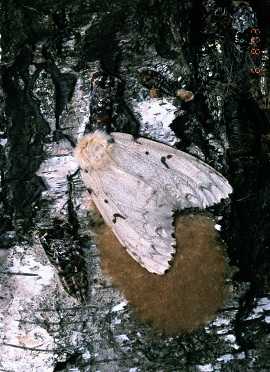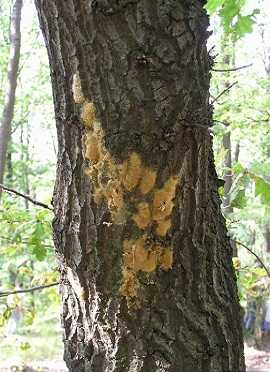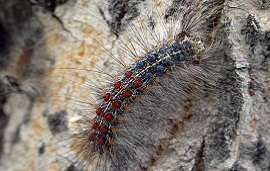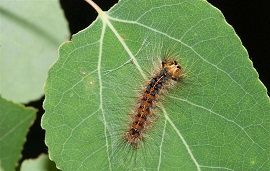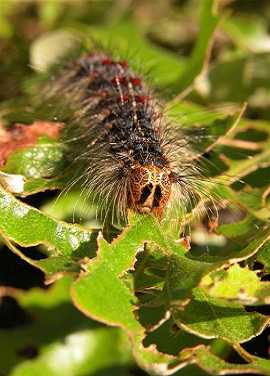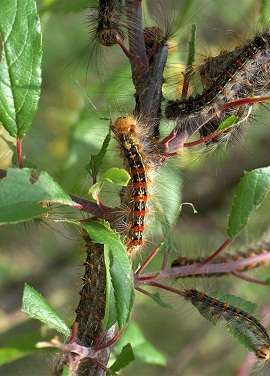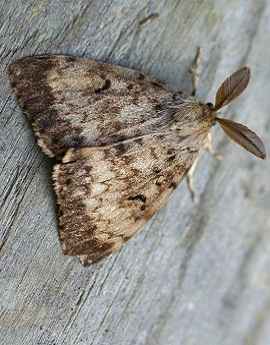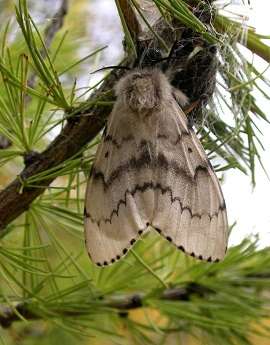What to Look For
Identify the Gypsy Moth

The gypsy moth passes through four stages: egg, caterpillar, pupa, and adult moth. Only the caterpillars damage trees and shrubs in the spring of the year from May to early June. The caterpillars are voracious feeders, and have a large menu that includes several hundred host trees and understory plants.
Damage from feeding caterpillars can be severe. They may completely defoliate large areas of urban and woodland trees. Nearly every tree and shrub, that is commonly planted in the landscape, is a host for gypsy moth. The following information will help you identify the gypsy moth life stages, and hopefully some of the more common caterpillars that are often mistaken for gypsy moth.
If you reside in Iowa and you suspect gypsy moth as a new introduction to your area, please let us know by going to our Contact us page. We would be interested in taking a closer look.
